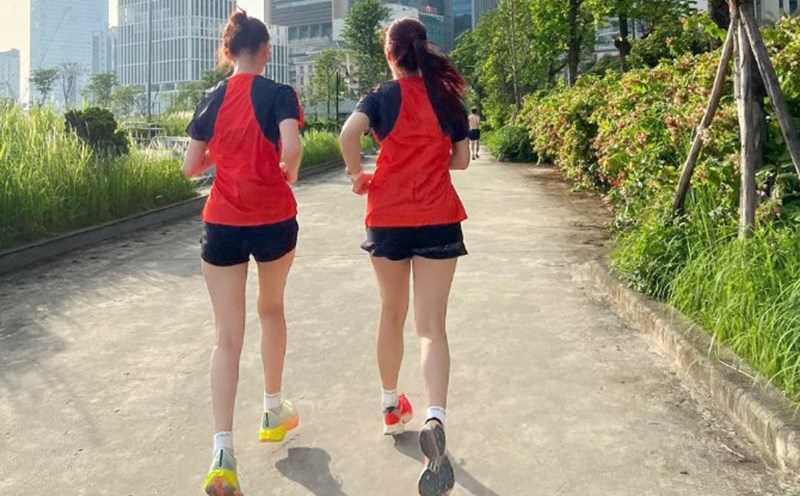Running in rain will cause the body to be water-absorbed and very susceptible to cold, affecting the immune system, or respiratory problems, injury and inflammation.
Practitioners can refer to some things to do immediately after running in the rain to effectively protect their health and support the body's recovery.
Change clothes and dry your body
Immediately after the end of the rain run, quickly change to wet clothes to limit cold contact. Rainwater seeping into the body will reduce body heat and be a favorable environment for bacteria to grow, causing dermatitis or flu.
Drying your body with a clean towel and changing into new clothes will help maintain a stable body temperature, especially in prolonged cold weather conditions.
Drink warm water and supplement electrolytes
Even when it rains, the body still sweats and loses water during exercise. Drinking warm water will help the body warm up gradually, support blood circulation and increase the ability to recover quickly.
In addition, you can choose light electrolyte replenishers or a little salt in a prolonged workout to supplement essential minerals such as sodium and potassium, helping to reduce cramps or muscle strain.
foot care and hygiene
Running in the rain can easily soak your feet, so clean them quickly with warm water, dry between toes to avoid moisture that can cause blisters or skin fungus. In particular, running shoes should be dried to avoid giving off a smell or damaging the cushioning in the shoes.
Do stretching exercises
After drying and keeping your body warm, you should spend 5 - 10 minutes doing gentle stretching exercises such as stretching, rotating your ankles or raising your knees.
This is a way to help soothe muscle groups that have been working continuously, prevent pain after each exercise as well as support effective blood circulation.











